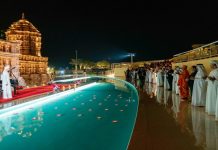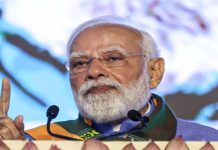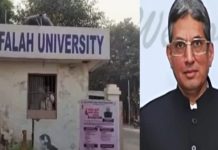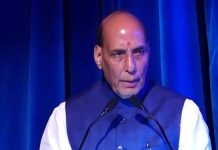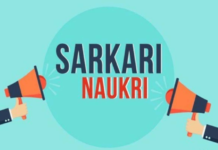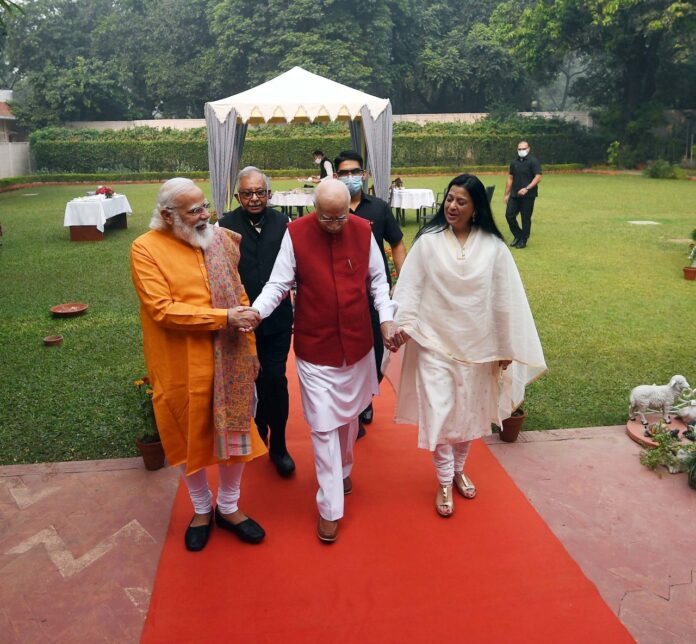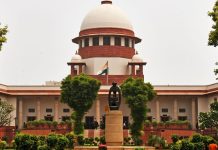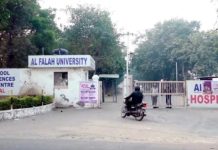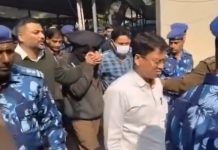New Delhi: BJP patriarch Lal Krishna Advani is all set to attend the Pran Pratistha of Ram Lalla in Ayodhya on January 22.
Ahead of the historic ceremony, of which he will be a witness, the BJP veteran has written an open letter about the significance of upcoming Ram Temple, the realization of a diving dream and also about its Pran Pratistha by Prime Minister Narendra Modi.
“When Prime Minister Narendra Modi does the ‘Pran Pratishtha’ of Shri Ram Lalla’s idol at Ayodhya, he would be representing every citizen of our great Bharat,” he wrote.
He also described PM Modi as an annanya bhakt (devoted disciple) of Lord Ram.
What LK Advani wrote:
I am elated beyond words that we are on the verge of realising my most cherished dream of having a grand Shri Ram temple at Ramjanmabhoomi, the birthplace of Shri Ram.
On 22nd January 2024, Prime Minister Shri Narendra Modi will install the idol of Shri Ram at the beautiful temple in Ayodhya, and I feel blessed that I will witness this historic occasion in my lifetime.
I have always believed that ‘faith’ is the foundation on which rest both a meaningful life of a person and the whole society at large. Faith not only infuses energy and confidence into a person’s life, but also helps give it direction. For me and for crores of Indians, this faith has been our deep reverence for Shri Ram.
Shri Ram embodies the spirit of India. The true spirit of India and Indianness is discipline, truth, honesty, ethics, moral values, acceptance and celebration of diversity, respect for elders, strong family bonds and all such fine human values and Shri Ram is the epitome of all these impeccable human qualities.
Hence the title ‘Maryada Purushottam’ (an exemplar among good human beings) by which he is known. He is an ideal for Indians’ aspiration to live a life of higher values.
Shri Ram was also an ideal king- the living embodiment of ‘Dharma’. Hence the concept of ‘Ram Rajya’, the epitome of good governance, was extolled as the ideal for India. Although Shri Ram is the holy religious figure worthy of worship for the Hindus, he is a pre-eminent symbol of India’s cultural heritage and national identity -which belong to all citizens alike.
The story of Shri Ram’s life, the Ramayana, is both a source and a carrier of the continuity of India’s cultural traditions and has greatly influenced the Indian mindset generation after generation, century after century.
Therefore, for the last almost 500 years, the reconstruction of the Ram Temple in Ayodhya has been a deep desire for countless Indians.
The Ramjanmabhoomi movement for the reconstruction of the temple at the Janmasthan of Shri Ram in Ayodhya proved to be a major watershed in the history of post-1947 India. Its impact on our society and polity, and on our sense of national identity has been tremendous.
In my own political journey, I have always said that the Ayodhya Movement was the most decisive transformational event, which gave me an opportunity to discover India anew, and in the process, rediscover myself.
I feel humbled that destiny made me perform a pivotal duty in the form of the Shri Ram Rath Yatra from Somnath to Ayodhya in 1990.
I believe that before any event finally occurs in reality, it takes shape and form in a person’s mind. At that time, I was feeling that a befitting temple for Shri Ram in Ayodhya would indeed be a certainty one day, and that it was only a matter of time.
A grand Mandir for Shri Ram at Ramjanmabhoomi had been a desire and mission for the Bharatiya Janata Party. When in the mid-1980s the Ayodhya issue rose to the centre-stage of national politics, I was reminded of the time how political stalwarts like Mahatma Gandhi, Sardar Patel, Rajendra Prasad and K M Munshi had, against all odds, effectively steered the reconstruction of another landmark temple in independent India- the Somnath Temple at Prabhas Patan on the coast of Saurashtra in Gujarat.
Somnath was both a witness to, and a target of, multiple foreign invasions during the medieval period. And reconstructing the Somnath temple was a proud testimony of India’s determination to erase the history of bigoted alien attacks and regain its lost cultural treasure.
Sadly, as in the case of Somnath, the temple at the birthplace of Shri Ram in Ayodhya had also become a target of attack by an invader, Babar, who founded the Mughal empire. In 1528, Babar ordered his commander Mir Baqi to erect a mosque at Ayodhya to make the spot a ‘place for descent of angels’- hence the name Babri Masjid.
It is widely believed, and later even confirmed by compelling archeological evidences that there was a pre-existing temple at Ayodhya which was demolished for establishing the mosque.
So in many ways, the Ayodhya movement was the continuation of the spirit of Somnath.
When the BJP decided in 1990 that I, as its President, should lead the Shri Ram Rath Yatra to mobilise people’s support for the Ayodhya movement, it took no time for me to choose Somnath as the starting venue of this historic journey.
On 12th September, 1990, I called a press conference at the party office at 11 Ashoka Road, New Delhi and announced my decision to undertake a 10,000-kilometre-long Rath Yatra, starting from Somnath on 25th September and reaching Ayodhya on 30th October to join the kar seva in Ayodhya, planned by the saints associated with the movement. 25th September was special to me as it is Deendayal Upadhyaya ji’s birth anniversary.
In my autobiography- “My Country My Life”, I have extensively talked about the Ayodhya Movement and the Shri Ram Rath Yatra that I undertook in 1990. On this momentous occasion today, I would like to recall some significant portions from it.




